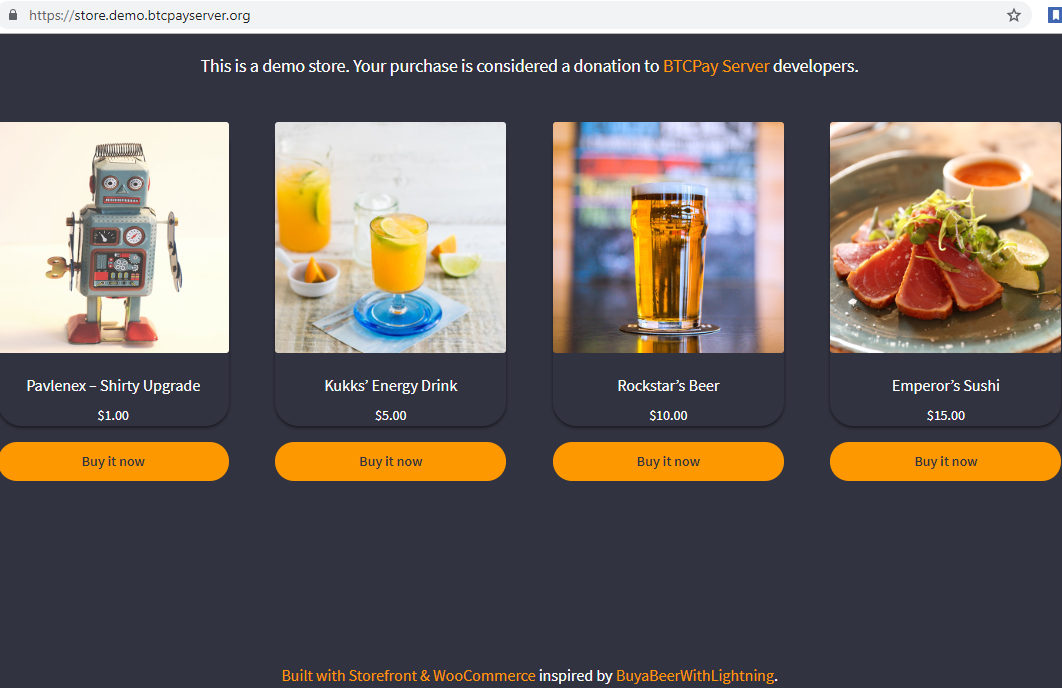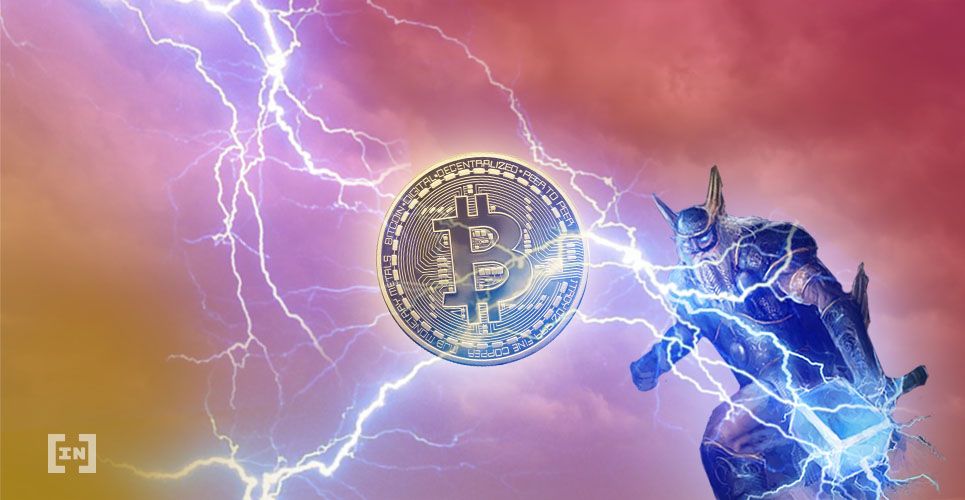On Jan 26, 2019, BTCPay Secure released a new demo e-commerce store that allows purchases to be made with bitcoins or portions of BTC across the Lightning Network — alongside a demo for a Lightning Network-based paywall which can be integrated into WordPress.
These are two of several emerging purposes for the Lightning Network.
The Lightning Network was developed to accelerate the speed at which transactions using Bitcoin could take place. It also decreased the overall fees associated with each transaction while adding heightened security measures.
BTCPay Server is a free and open-source platform that integrates the Lightning Network with a variety of other platforms. This integration allows users to make purchases with increments of millisatoshis (0.000000000001 bitcoin) rather than dollars or other fiat currencies.
 A new e-commerce demo store was displayed on BTCPay’s twitter and website on Jan 26.
Four items are listed for sale, including a mug of beer and sushi.
The BTCPay Plugin was integrated with the WooCommerce platform on WordPress.
Also, present on the site is a demo for a point-of-sales interface. Because this is a demo site, no actual purchases can be made, however. Instead, all “purchases” are concerned donations to keep the BTCPay Service available for open-source usage.
A new e-commerce demo store was displayed on BTCPay’s twitter and website on Jan 26.
Four items are listed for sale, including a mug of beer and sushi.
The BTCPay Plugin was integrated with the WooCommerce platform on WordPress.
Also, present on the site is a demo for a point-of-sales interface. Because this is a demo site, no actual purchases can be made, however. Instead, all “purchases” are concerned donations to keep the BTCPay Service available for open-source usage.

Lightning Network as a Paywall
Shortly after revealing the e-commerce demo, BTCPay released a demo for a paywall using the Lightning Network. A paywall restricts access to a website or webpage unless a certain amount of money is paid to ‘move past the wall.’ In this instance, the paywall integrates with WordPress to hide articles published on the site.Two possible purposes for this service include:If you have a WordPress blog, you can easily hide articles behind a Lightning Network paywall. It takes 2 minutes to set it up if you have a BTCPay Server
— BTCPay Server (@BtcpayServer) January 26, 2019
Here's our demo.https://t.co/N4FPnfkB84
- The hiding of articles from public viewership: While articles can be hidden from public view until the proper amount of millisatoshis is paid, this service does not appear to make the articles entirely private. On the contrary, if the predetermined amount is paid using a Lightning Network address, anyone should be able to access the information behind the wall.
- Charging readers to access the article: This ‘pay-per-article model’ is posited as a possible solution to other mass-media funding models — but this may not be entirely feasible for a number of reasons. Firstly, there has to be a reason given as to why a reader would choose to pay-per-article they read over other models with which they are already accustomed. None are offered, nor does there appear to be sufficient market research to determine if there is an economically viable demand for such a service. Readers of online articles may be perfectly content reading from websites and web pages which use traditional advertising and funding methods that do not cost money to the actual reader. Furthermore, while transactions on the Lightning Network carry lower fees than those made on the Bitcoin mainnet, these fees could theoretically increase beyond a point of financial practicality for the average user. It may become a service only to those with a certain level of disposable income. In other words, the pay-per-article model could alienate readers and decrease overall traffic to one’s site.

BTCPay vs. Blockstream
Also on Jan 26, another use for the Lightning Network emerged: data-sharing. Using the satellite network designed by Blockstream, a message relay was created to send text files on the Lightning Network. While both Blockstream and BTCPay offer Lightning Network services, there is a major difference between the two. Blockstream is a private corporation producing and distributing blockchain-based technology. On the other hand, BTCPay Secure is a freely accessible, open-source platform. In other words, where Blockstream maintains centralized ownership and authority over their Lightning Network service, BTCPay remains decentralized with distributed ownership based on actual usage of the service. In this way, BTCPay aligns with the Nakamoto Theory of Decentralization — whereas Blockstream does not.Conclusion
A variety of use-cases have developed for the Lightning Network (LN). Two include the integration of the LN into WordPress for e-commerce and pay-per-article purposes. Furthermore, message relay clients have been designed to use the LN for text file sharing. Accessing LN services can be done through decentralized services like BTCPay, which align with the Nakamoto Theory of Decentralization, or private corporations like Blockstream, which offer centralized Network services using their own Bitcoin-based technologies. What other purposes do you think will develop for the Bitcoin Lightning Network? Let us know your thoughts in the comments below!Disclaimer
In adherence to the Trust Project guidelines, BeInCrypto is committed to unbiased, transparent reporting. This news article aims to provide accurate, timely information. However, readers are advised to verify facts independently and consult with a professional before making any decisions based on this content. Please note that our Terms and Conditions, Privacy Policy, and Disclaimers have been updated.

Alexander Fred
Global AI, Data Science, and Blockchain expert. Alexander writes for BeInCrypto where he completes technical analyses of various alt-coins and qualitative commentary and analysis about various cryptoassets and their potential for social integration.
Global AI, Data Science, and Blockchain expert. Alexander writes for BeInCrypto where he completes technical analyses of various alt-coins and qualitative commentary and analysis about various cryptoassets and their potential for social integration.
READ FULL BIO
Sponsored
Sponsored

